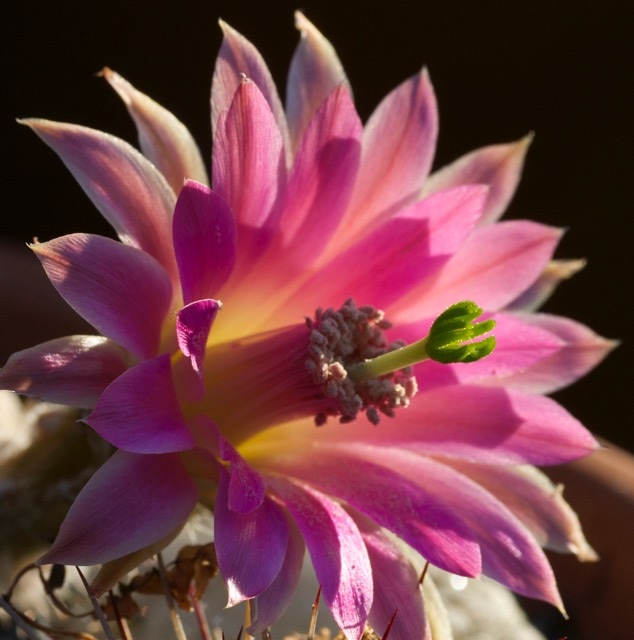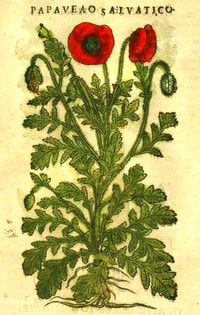Potatoes- simple, nutritious and unsightly; the Homo sapiens of the vegetable world.
Growing potatoes at home is possibly the easiest thing you'll ever do in the average garden as far as bang for buck is concerned, especially if you ignore the complex apocryphal bullshit that's grown up around the practice. Gardeners of yore preferred you to think they were rustic savants. I'm here to tell you they were just dicks with shovels and time on their hands like the rest of us. We really hate all the elitist obfuscation around something as basic and increasingly important as growing food at home and hope our straight agricultural dope will encourage others to reclaim the practice. You really do just chuck them in the ground and dig them up three months later. Don't overthink it.
| < First, find some potatoes. We enjoy quite a wide range of old and new varieties here in NZ, and we've grown around a dozen or so ourselves. This year we're going with (L2R)- random yellow from the supermarket since they were already beginning to sprout; Agria, a floury white main cropper, and Purple Heart, a waxy purple allrounder. |

You can bury a live potato before it has visibly sprouted; it will usually grow normally enough once the soil is warm. It just takes a little bit longer and you may have planted a few duds.
| > And by fallow, we mean fallow. This is the long L-shaped bed full of weeds and going-to-seed kale that is our designated potato land. Looks bad, doesn't it? Never mind; an hour's digging puts it right. BELOW: Ready for planting out. This is okay-to-good soil that's probably still reeling from last year's overenthusiastic fertiliser application, so we won't amend it further at this point. Too much fert and new organic-based compost added to the soil at planting time will mean you end up with scabby-skinned potatoes. They're still perfectly edible, just ugly. So soil that may be a little tired is still fine for spuds. BELOW: Once you've dug it over to a depth of 20-30cm, toss your spuds over the surface to work out your spacing. Not too hard since you don't want to bust the buds off the tubers. This bed's about a metre wide, so yeah, we are cramming them a wee bit. Oh well. > Planting: We dig as far down as the trowel and our patience will allow (around 20cm) and then place the tuber in the hole, sprouty bits facing up. Leave them uncovered so you can see where they are as you're planting, then backfill the holes (don't tamp them down hard- you can fuck up the buried buds). Just covered or a full foot- you'll get potatoes either way and we've never discovered an optimal depth. You're going to mulch them anyway so don't lose sleep about it. | How many you grow will depend on the available space. We plant tightly at around 1 seed spud per 30 square centimetres. That will possibly horrify traditionalists who insist on much wider spacing, but we've found that in our conditions spacing produces little difference in yield. This may be because we plant in long strips rather than fat blocks and the plants are therefore lit and aerated from both sides. When to plant. In our mild NZ coastal Zone 9 position (think something between coastal California and the southern Irish coast), we do so anytime from early September to Feburary, resulting in cropping from Xmas into late autumn. We could possibly get away with them all year round since we're not very frosty, but we prefer to leave the garden fallow in winter. Potatoes don't really care where you put them. Shallow soil, deep soil, bad soil, half-sun, full sun; the only conditions you should spare them are too much shade and waterlogged soil. That will guarantee rot of the tuber and wilt of the leafy parts. Aside from that, we actually used spud crops to break up shitty clay pan when we were bringing this garden into cultivation. Works a treat. Sorry worms! Everything is poodle business. |
Once you have adult-looking plants try and water once a day, easing off with the hose once the crop hits three months old and starts to get a bit geriatric. At this juncture they're committing their last energy to the subterranean tubers and are particularly susceptible to shitty diseases. Don't turn them into a pile of slimy mush by wetting them all the time.
I won't go into the pests and diseases that can afflict potatoes in any given area; there are a few here, but we've never suffered any major epidemics in our diverse, unsprayed garden. When I see a bit of blight, I just rip off that part of the plant, adjust my cultivation and leave the rest to take their chances. If you're suffering a heavy pest and pathology load you might want to review your entire gardening system and that's beyond the scope of this piece.
I'll write about harvesting and storage when the time comes. BELOW RIGHT: Here's the garlic we planted in mid winter (read about that here); it's coming along nicely. BELOW LEFT: Let's kick the growing season off with a nice big fucking trowel blister. Some hands stay tough and honest all year round; others have been up to no-good effete shit all winter. A writer's work is never done.

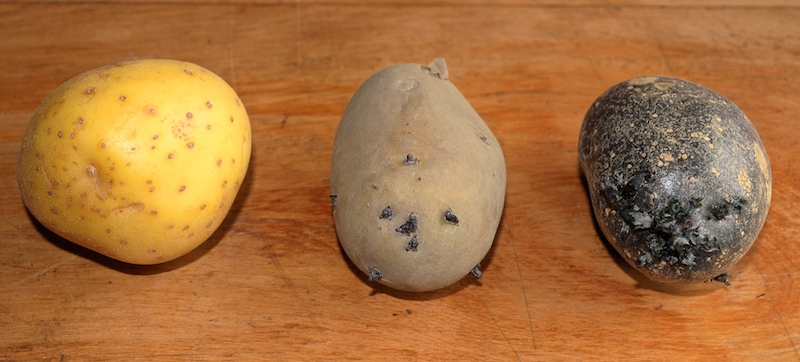
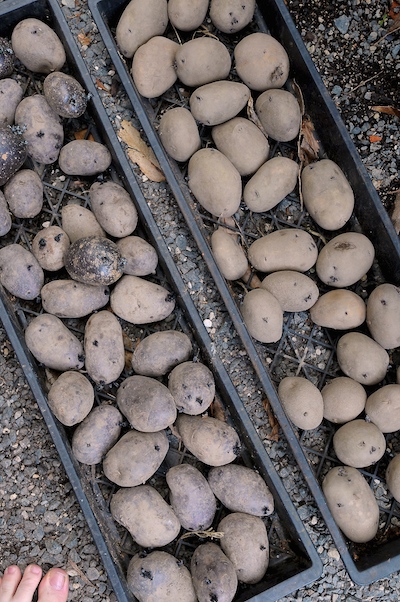
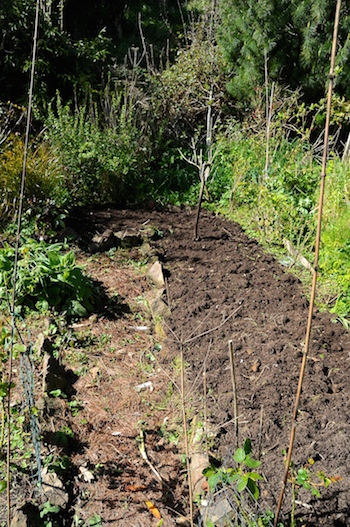





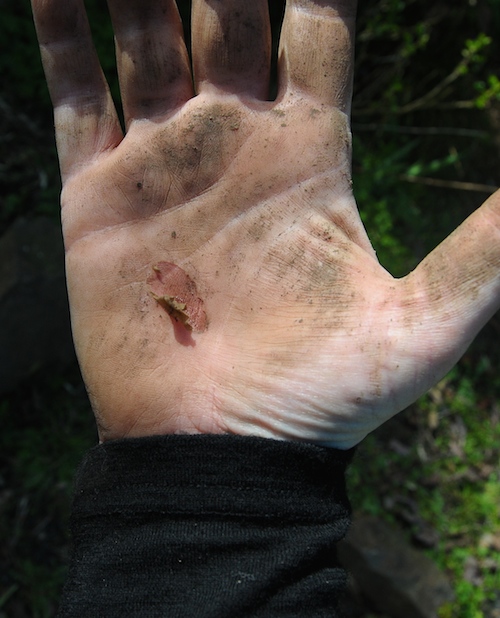

 RSS Feed
RSS Feed













